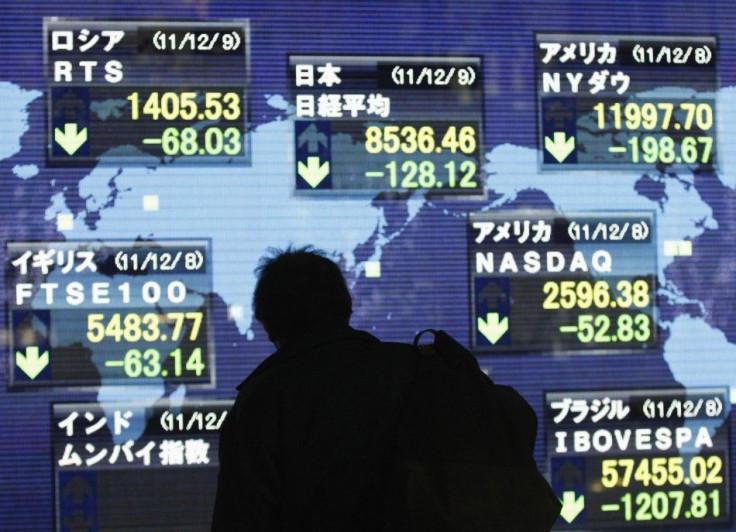Asia Markets Close Higher Friday on Improving U.S. Economic Data

(Reuters) - Asian markets rose more than 1 percent and U.S. index futures also gained on Friday, as signs of a strengthening economy in the United States encouraged a year-end bounce for riskier assets.
European shares were also expected to open higher, helped by a 0.5 percent rise in S&P 500 index futures that pointed to further gains when U.S. trading resumes.
Wall Street stocks had risen for a third straight day on Thursday, leaving the S&P 500 index virtually flat for the year, after data showed new claims for unemployment benefit dropped to their lowest in 3-1/2 years.
The euro crept higher, but remained subdued amid doubts over whether this week's European Central Bank tender of cheap loans will be effective enough to ease the financial strain on troubled euro zone economies.
The highlight is the continuation of good data on the U.S. economy. China also seems to have managed to orchestrate a soft landing..., said Ben Le Brun, market analyst with OptionsXpress in Sydney. The problem child is still Europe.
MSCI's broadest index of Asia Pacific shares outside Japan rose 1.2 percent, with Australian and Korean shares both rising more than 1 percent . Tokyo's financial markets were closed for a holiday.
Spreadbetters called London's FTSE to open up 0.6 percent, Frankfurt's DAX up 0.9 percent, and Paris' CAC-40 up 1 percent.
Asian share markets, both developed and emerging, have sharply underperformed U.S. stocks in 2011, with the MSCI Asia ex-Japan losing 17 percent, and the Nikkei share average down about 18 percent, while Australia's benchmark has lost about 13 percent. The MSCI World index fared slightly better, losing only 10 percent this year.
Citigroup equity strategists said in a note that Asia had seen its worst December fund outflows in 20 years as investors continued to pull money out of global equity funds.
EURO LOOKS FOR SUPPORT
The euro crawled up to around $1.3067, from $1.3050 late in New York, in thin trade.
The ECB's first ever tender of ultra-cheap three-year loans on Wednesday, which saw 523 banks gorge on a total of 489 billion euros, has failed to win the single currency much support.
But despite the long-running debt crisis, the euro is only down around 2.4 percent for the year, having found support from higher ECB interest rates in the first half of 2011 that pushed it to a year high near $1.50 in May.
People are diversifying away from U.S. dollars and that's what it comes down to, said David Scutt, a trader at Arab Bank Australia in Sydney.
Despite the fact the U.S. economy is strengthening, there are still expectations in the marketplace that the Fed has showed it's very keen to print at the best of times, and that's helping the likes of the euro.
The U.S. Federal Reserve has kept interest rates near zero for more than three years and has signalled it will keep them there through at least mid-2013. It has also bought $2.3 trillion in long-term securities to push down borrowing costs.
The New Zealand dollar dipped briefly on news of another earthquake near Christchurch, but soon steadied as there were no reports of casualties or widespread damage, unlike the previous quake in February.
It was trading at $0.7745, up from $0.7724 late in New York.
The rosier picture painted by the U.S. data supported commodities, with copper, which is sensitive to expectations of industrial demand, rising 0.5 percent to $7,575 a tonne, on course for its first weekly gain in three weeks.
U.S. crude oil edged up slightly, drawing closer to $100 a barrel, while Brent crude was little changed just below $108.
Gold inched up 0.2 percent to around $1,609 an ounce.
The precious metal has shed more than $300 since racing to a record above $1,920 in September, an appreciation driven partly on fears that the Federal Reserve's monetary easing steps would stoke inflation against which it has traditionally been seen as a hedge, but remains up around 13 percent on the year.
--
--
© Copyright Thomson Reuters 2024. All rights reserved.




















